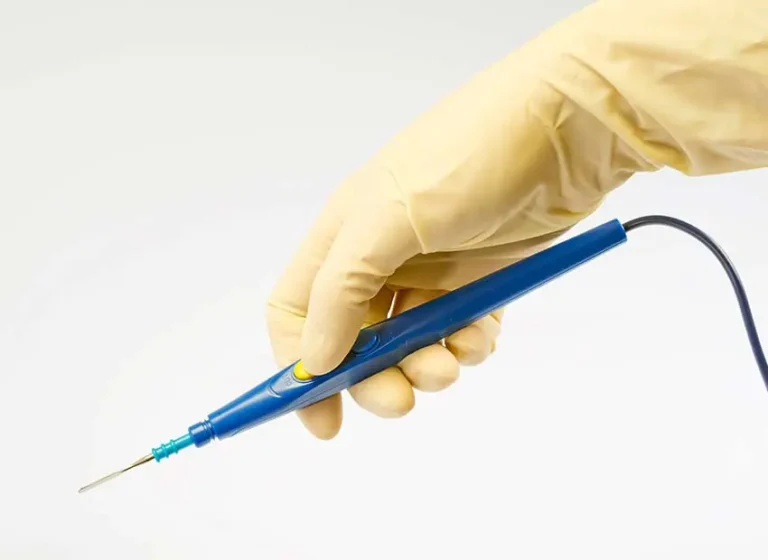Home » Conditions » Intimate area » Pearly penile papules
Pearly penile papules (PPP) are a benign dermatological condition affecting approximately 39% of men, with a higher prevalence among those who are uncircumcised. These small, flesh-colored growths, ranging from one to three millimeters in size, typically appear during adolescence around the corona of the glans. They are painless, non-contagious, and neither pathological nor indicative of any disease. PPP does not interfere with sexual activity.
Commonly referred to by men as "bumps on the glans," pearly penile papules are a purely aesthetic concern. While completely harmless and not sexually transmissible, they may cause psychological distress or self-consciousness. Fortunately, effective treatment options are available.
The removal of pearly penile papules using electrosurgical excision is a safe and efficient medical procedure. In this article: a comprehensive explanation of pearly penile papules, their causes, available treatments, and post-treatment recommendations.
Pearly penile papules (PPP), also known as hirsuties coronae glandis, are a benign physiological variation characterized by small, dome-shaped growths around the edge of the glans penis. These papules are angiofibromas that enlarge under hormonal stimulation. While the exact cause of this condition is not fully understood, several factors contribute to its development.

The treatment of pearly penile papules is not a strict medical indication.
This condition is often a source of anxiety and discomfort during intercourse, making it more of an aesthetic treatment.

A medical consultation precedes the procedure to rule out differential diagnoses.
On the day of the session, the treatment area is carefully cleaned and disinfected. A numbing cream is applied. The session lasts about ten minutes and is completely painless.
During the first session, 80% of the lesions will be eliminated. A complimentary touch-up is scheduled after 4-5 weeks to vaporize any remaining lesions.
Several techniques exist, including laser, chemical peeling, and electrosurgery.
Dr. Romano now exclusively uses electrosurgery. This method precisely burns the targeted tissues while minimizing bleeding and the risk of scarring.
The papules are destroyed through vaporization without damaging the surrounding tissues.
In some cases, this procedure cannot be performed. Contraindications include the presence of metallic implants in the body (dental implants are not a contraindication) and the use of a pacemaker or cardiac defibrillator.
Both electrosurgery and laser are effective options for treating pearly penile papules.
Electrosurgery precisely vaporizes the papules without affecting the surrounding tissue. Compared to laser treatment, this technique is less expensive and carries zero risk of scarring. The procedure is painless, and the healing phase is very short, lasting about five days.
Laser treatment is a more aggressive method that may cause pigmentation changes or small residual marks. Healing takes between two and three weeks. The targeting of the papules is less precise, and the surrounding tissue is more affected.
After the procedure, it is essential to follow specific recommendations to ensure proper healing and prevent complications.
Il n’existe pas de traitements naturels qui peuvent aider à réduire l’apparence de la couronne perlée du gland.
Here are some commonly suggested remedies found online :
Unfortunately, these natural methods are not an effective alternative to medical treatments.
The healing phase lasts five to seven days. After this period, the patient will have a completely smooth penile corona. There are no scars or pigmentation issues (lighter or darker spots) following the procedure.
Post-treatment effects are minimal and may include :
À Genève, le traitement de la couronne perlée est généralement réalisé à l’aide d’un bistouri électrique. Le tarif varie entre 600 CHF et 800 CHF, en fonction de l’étendue des lésions, du nombre de papules à traiter et de la complexité de l’intervention. Le coût comprend la première séance et une séance de retouche 4 à 6 semaines après.
Patient reviews regarding the treatment of pearly penile papules using an electrosurgical scalpel are highly positive.
The removal of the papules significantly enhances self-confidence and overall well-being.
Patients appreciate the speed and effectiveness of the procedure, as well as the absence of pain during both the treatment and the healing phase.
The treatment is completely painless thanks to the local anaesthetic applied before the procedure. Patients may feel a slight sensation of heat or tingling during the treatment.
The treatments for the beaded crown of the glans are :
No, the beaded crown of the glans does not disappear spontaneously. Although it may become less noticeable with age, the papules remain unless medical intervention is carried out.
Yes, the beaded crown of the glans is relatively common and is found in a significant percentage of men. It is considered a normal anatomical variation.
Condylomata and lichen.
The diagnosis is clinical.
No, pearly papules are not contagious.
Pearl papules on the glans do not generally require treatment, as they are neither dangerous nor contagious. However, if they cause aesthetic or psychological discomfort, they can be removed.
Les papules perlées du gland apparaissent à l’adolescence et restent stables. Dans certains cas, elles peuvent devenir moins visibles avec l’âge.
The best way is to consult a doctor.
Symptoms of glans disease may include: